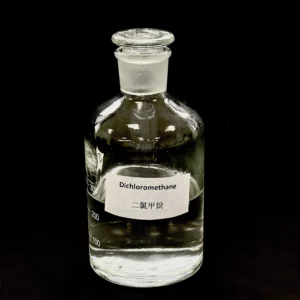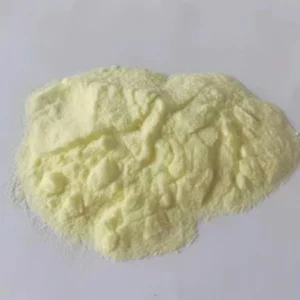A química desempenha um papel vital em várias indústrias, De produtos farmacêuticos à ciência dos materiais. Neste guia completo, vamos nos aprofundar nas propriedades, formulários, e significado de vários compostos químicos: Hidroperóxido de terc-butila, Ácido fórmico, DBU (1,8-Diazabiciclo[5.4.0]undec-7-eno), Cloreto de benzila, e sal de amônio. Esses compostos encontram aplicações na síntese orgânica, processos industriais, e pesquisa. Junte-se a nós enquanto exploramos as características únicas e os usos versáteis desses produtos químicos, lançando luz sobre sua importância em diversos campos.

Hidroperóxido de terc-butila: Agente oxidante versátil
Hidroperóxido de terc-butila (Tbhp) por Fabricante de hidroperóxido de terc-butil da China, é um peróxido orgânico amplamente utilizado como um agente oxidante em várias reações químicas. É comumente empregado na síntese de compostos orgânicos, como álcoois, cetonas, e éteres. O TBHP exibe alta reatividade e seletividade, tornando -o uma ferramenta valiosa para químicos orgânicos. Adicionalmente, O TBHP encontra aplicações em processos de polimerização, onde atua como iniciador ou co-iniciador. Sua capacidade de gerar radicais livres o torna adequado para iniciar reações radicais. No entanto, Cuidado deve ser exercido devido aos seus riscos potenciais, incluindo sua inflamabilidade e sensibilidade ao choque ou calor.
Ácido fórmico: Um composto multifuncional
Ácido fórmico de Fornecedor de ácido fórmico da China, é um incolor, líquido pungente com uma ampla gama de aplicações. É comumente usado como conservante, Agente antibacteriano, e agente redutor. Na indústria têxtil, O ácido fórmico é empregado para tingimento e processos de acabamento. Também serve como coagulante na produção de borracha. Além disso, O ácido fórmico encontra o uso como um aditivo de alimentação, permitindo uma digestão melhorada no gado. Também pode ser utilizado como um agente de limpeza, Ajustador de pH, e catalisador em várias reações químicas. Sua versatilidade e toxicidade relativamente baixa tornam o ácido fórmico um composto importante em vários setores.
DBU (1,8-Diazabiciclo[5.4.0]undec-7-eno): Uma base orgânica versátil
Dbu como feito por China dbu benzil cloreto de amônio fornecedores de sal, Também conhecido como 1,8-diazabicyclo[5.4.0]undec-7-eno, é uma base orgânica altamente útil. Encontra aplicação extensa na síntese orgânica, particularmente em reações envolvendo catálise ácida-base. A DBU é conhecida por sua capacidade de desprotonar ácidos e formar sais, tornando -o valioso em várias transformações. É frequentemente usado como catalisador na síntese de produtos farmacêuticos, Polímeros, e outros compostos orgânicos. As fortes propriedades básicas da DBU e sua compatibilidade com uma ampla gama de solventes o tornam uma escolha popular na indústria química.
Cloreto de benzila: Um bloco de construção importante
O cloreto de benzil é um composto orgânico com inúmeras aplicações na síntese de vários produtos químicos. Serve como um bloco de construção importante na produção de produtos farmacêuticos, fragrâncias, e corantes. O cloreto de benzila é comumente usado para introduzir o grupo benzila em moléculas orgânicas, Como prontamente sofre reações de substituição nucleofílica. Também é empregado na síntese de éteres de benzil, ésteres, e aminas. No entanto, Deve -se ter cuidado ao lidar com o cloreto de benzil devido à sua natureza corrosiva e tóxica.
Sal de amônio: Diversas aplicações
Os sais de amônio são compostos versáteis com uma ampla gama de aplicações em várias indústrias. Eles acham o uso como fertilizantes, retardadores de chama, desinfetantes, e reguladores de pH. Os sais de amônio também são empregados na indústria farmacêutica como ingredientes ativos ou excipientes em formulações de medicamentos. Adicionalmente, Eles servem como surfactantes e emulsificantes em produtos cosméticos e de cuidados pessoais. As diversas propriedades e aplicações de sais de amônio os tornam compostos valiosos em vários setores.
Conclusão
Compostos químicos, como terc-butil hidroperóxido, Ácido fórmico, DBU, Cloreto de benzila, e sal de amônio desempenham papéis essenciais na pesquisa científica, processos industriais, e aplicações diárias. Suas propriedades únicas e funcionalidades versáteis os tornam ferramentas valiosas para químicos, Engenheiros, e pesquisadores em vários campos. Compreender as características e aplicações desses compostos nos permite aproveitar seu potencial na síntese orgânica, Ciência dos Materiais, produtos farmacêuticos, e além. Explorando os diversos usos desses produtos químicos e adesão aos protocolos de segurança, Podemos alavancar seus benefícios, garantindo manuseio e aplicação responsáveis em nossa busca por progresso científico e inovação.





